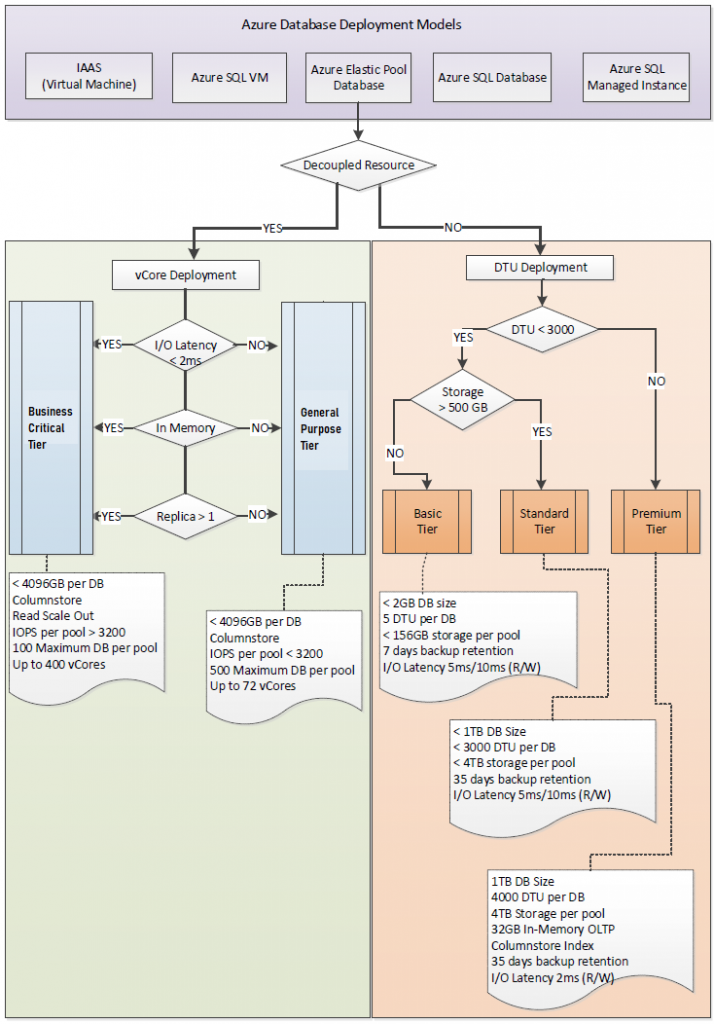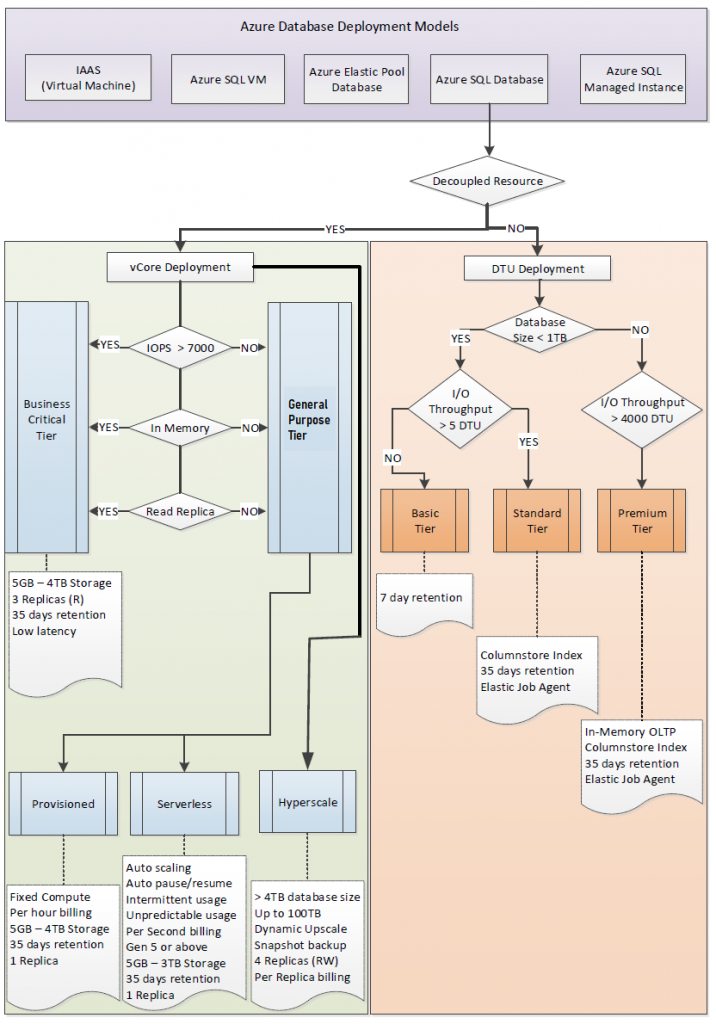
Azure SQL database is a cloud based Database as a Service provided by Microsoft Azure platform. This service is based on the traditional SQL Server database platform, unlike on-premise SQL Server database which is fully managed by organization’s IT infrastructure team, Azure database services are fully managed by Microsoft. The database platform management such as patching, high availability, backup, etc.
Microsoft provides three deployment models of Azure SQL database services, these are
- Azure SQL Database Elastic Pool: Ability to host more than one database in the SQL Server instance and shared the allowed resource by the databases that are within the instance pool. Ideal for databases that have complementary resource utilization which spike at different time without creating resource contention
- Azure SQL Database: One instance with only one database deployment model, ideally for workload that need consistent compute resource.
- Azure SQL Managed Instance: Deployment model that matches the feature and functionality of on-premise SQL Server and ideal for lift and shift of on-premise databases to cloud.
This presentation is focused on Azure SQL and Azure SQL elastic pool deployment models.
Deployment Models
Azure SQL database/elastic pool provides two types of deployment tiers, these are Database Transaction Unit (DTU) and vCore.
vCore Deployment:
Virtual Core (vCore) deployment model is the logical representation of independent compute (CPU, Memory & IO) and storage resources that can be scaled up or down providing a more flexible & right size resource allocation to meet application requirements.
Table – Azure Elastic Pool based vCore Deployment

Table – Azure Single Database based vCore Deployment

DTU Deployment:
Database Transaction Unit (DTU) model is resource deployment model where by a blend of pre-configured compute resource (CPU, Memory & IO) that scales up and down together as a unit. This is ideal for applications with simple and linear resource need.

Service Tiers
- Business Critical Tier: Low latency workload with high availability oriented deployment.
- General Purpose Tier: The most affordable and least performance tier designed for budget oriented small to medium workload deployments.
- Hyperscale Tier: Highly scalable storage with high throughput & performance for applications that require a rapid scaling to adapt to an instant workload requirement.
- Basic Tier: Designed for application with a light transactional workload, ideal for development environment
- Standard Tier: Mid-level performance tier with business continuity feature with predictable workload.
- Premium Tier: Mission critical service tier with the highest performance and advanced business continuity features for predictable workload.


In subsequent blogs the following topics will be covered
- Introduction to Azure SQL database services
- Azure SQL database SKU selection
- Azure SQL database security
- Azure SQL database backup & restore
- Azure SQL database auditing, monitoring & alerting
- Azure SQL database High Availability
- Azure Resource Manager (ARM) Template deployment
- Power BI Integration through VNET data gateway
